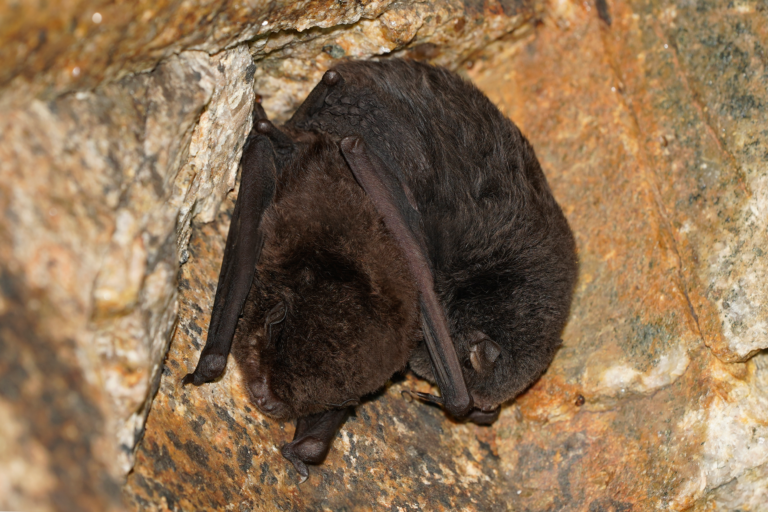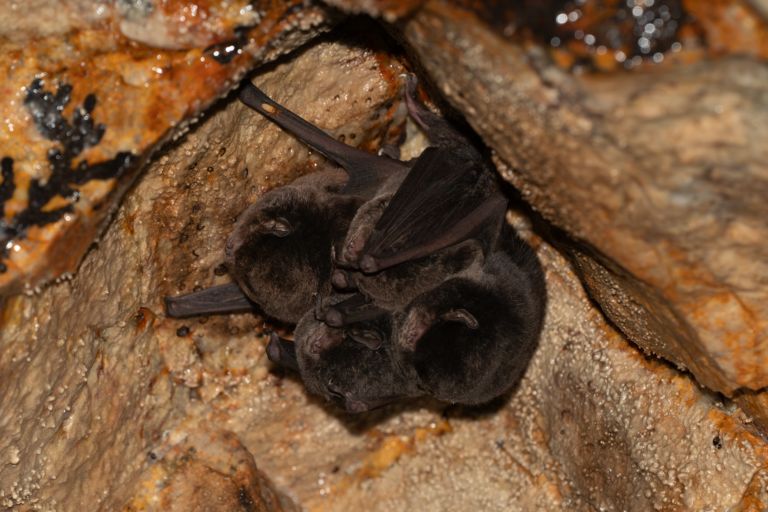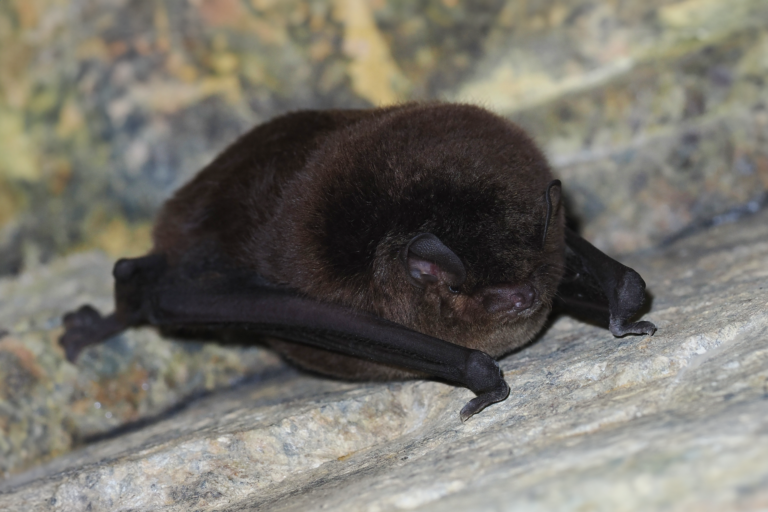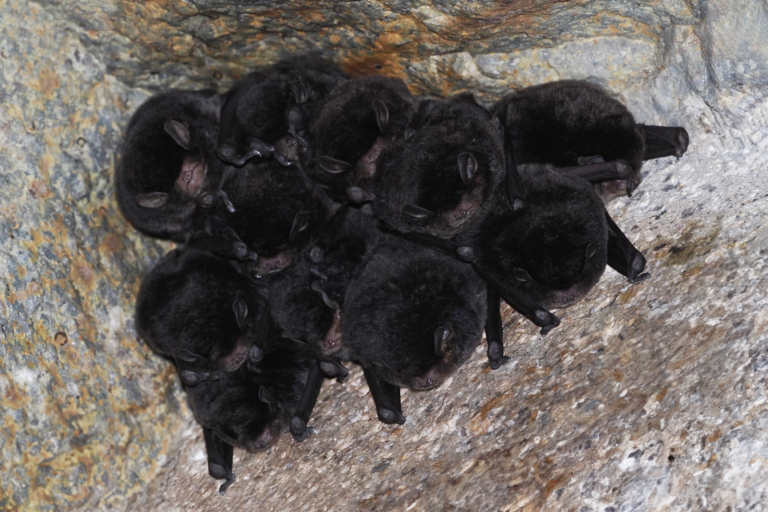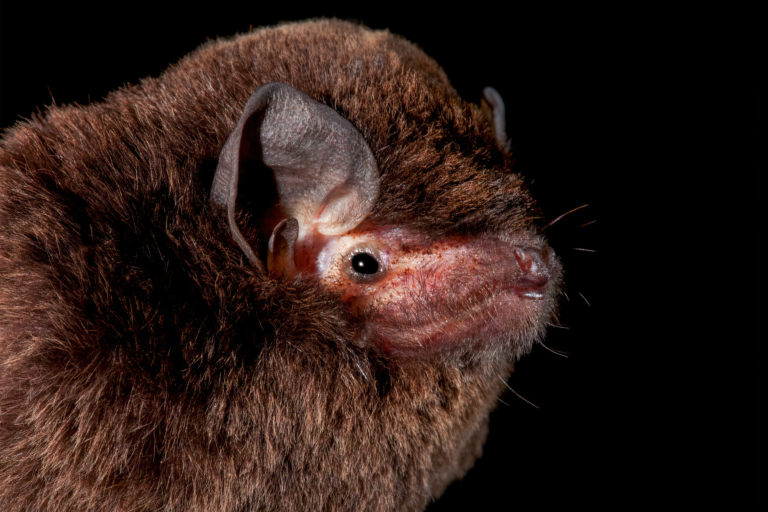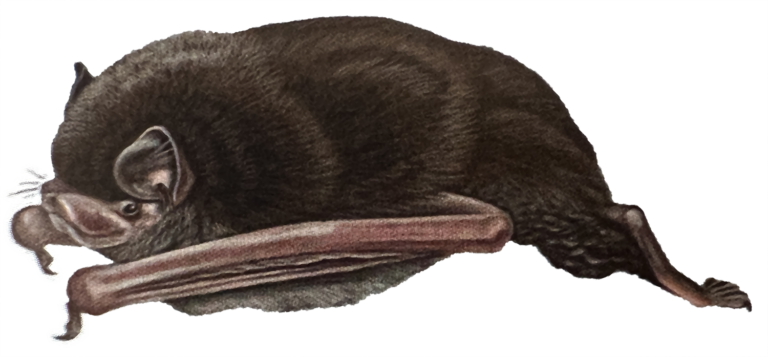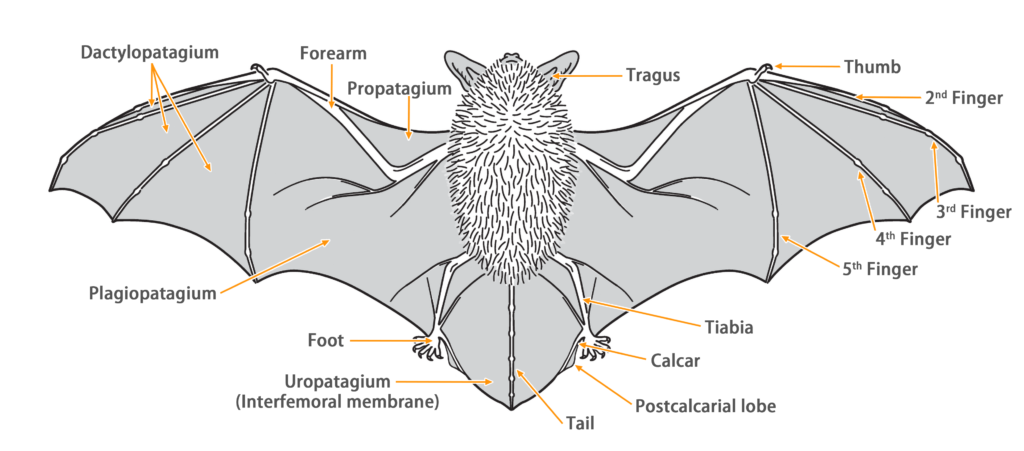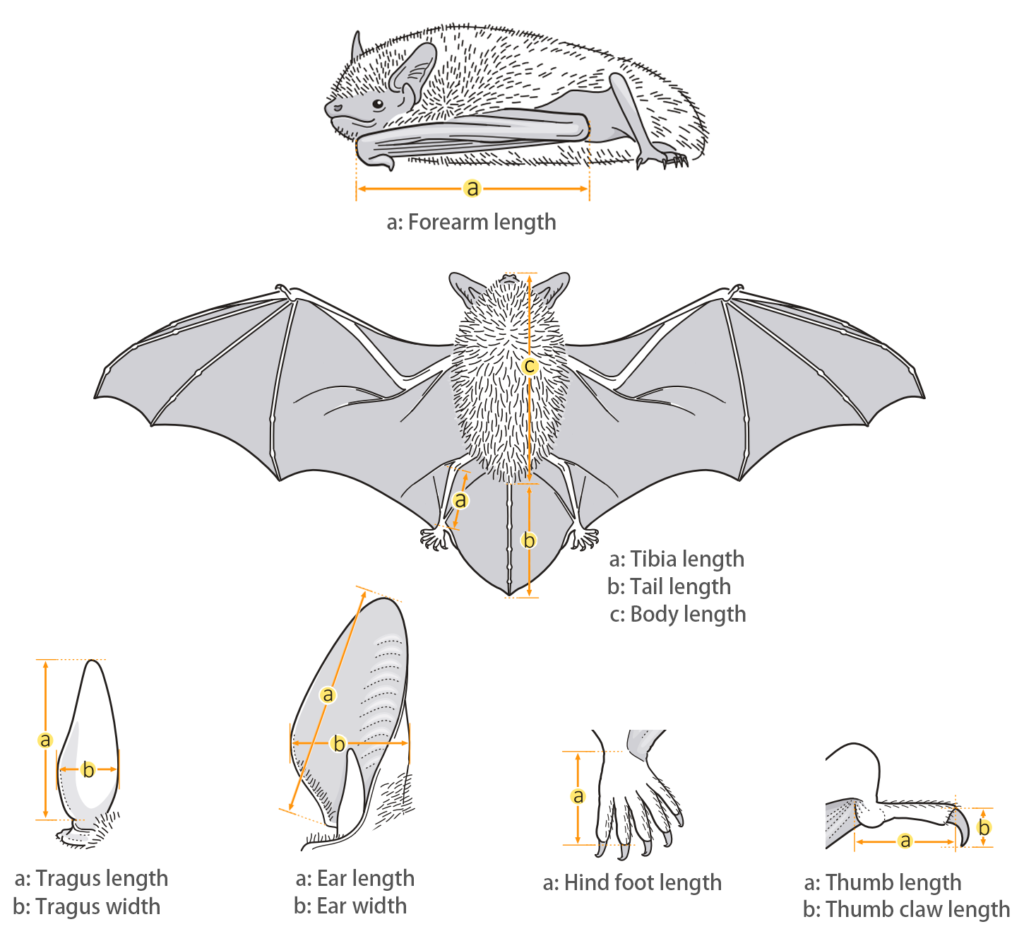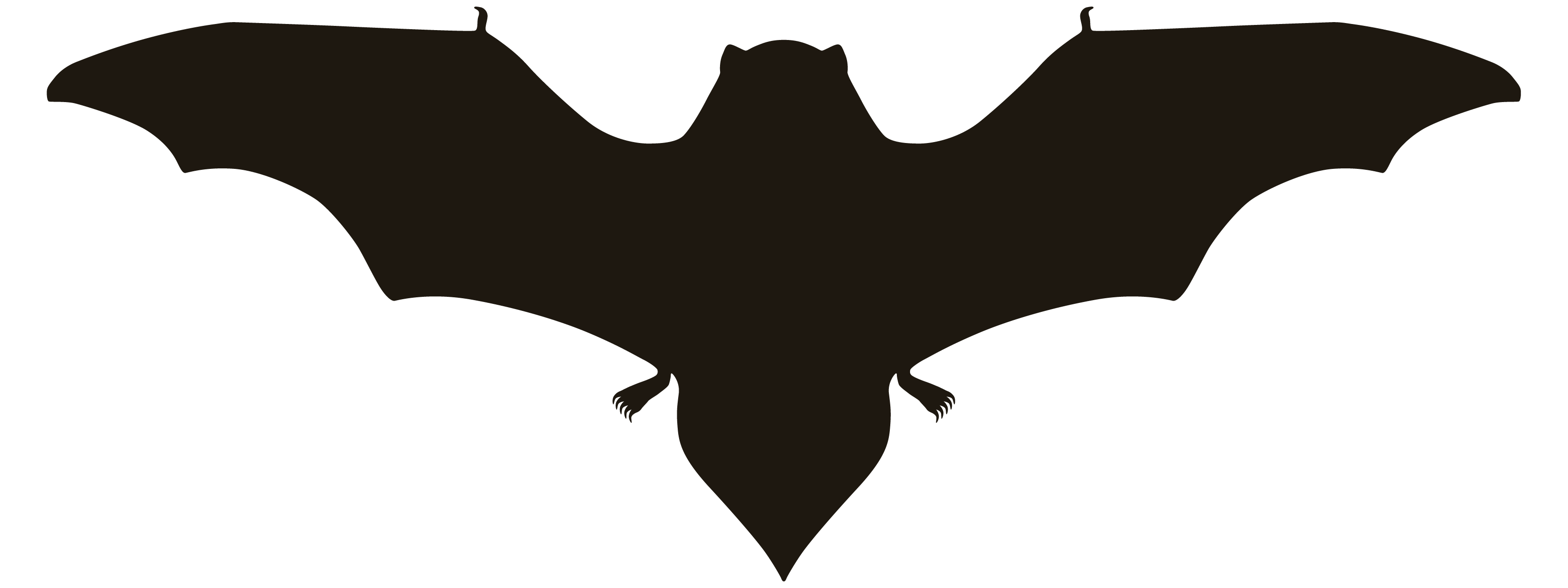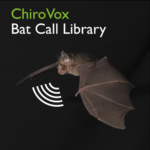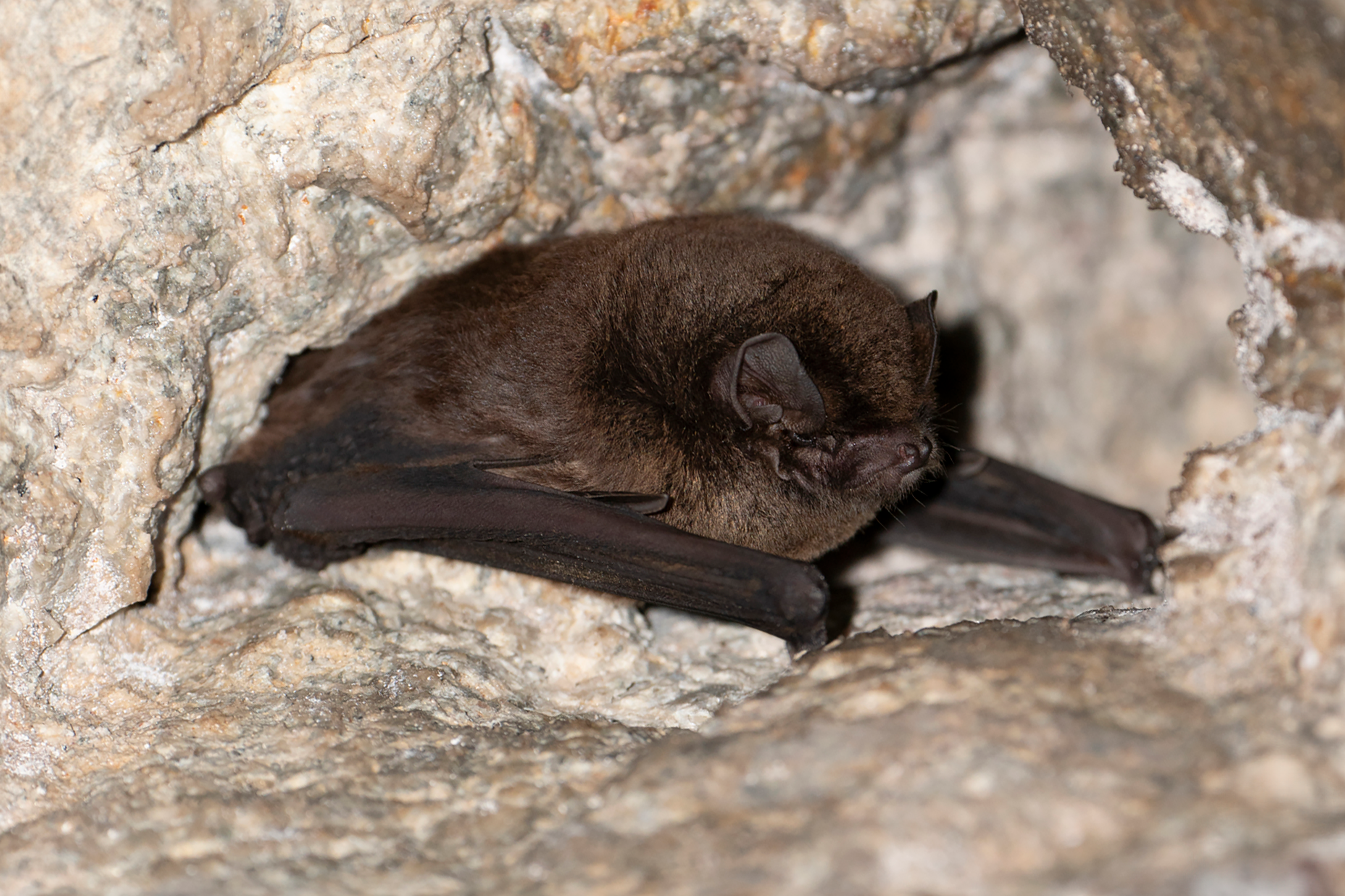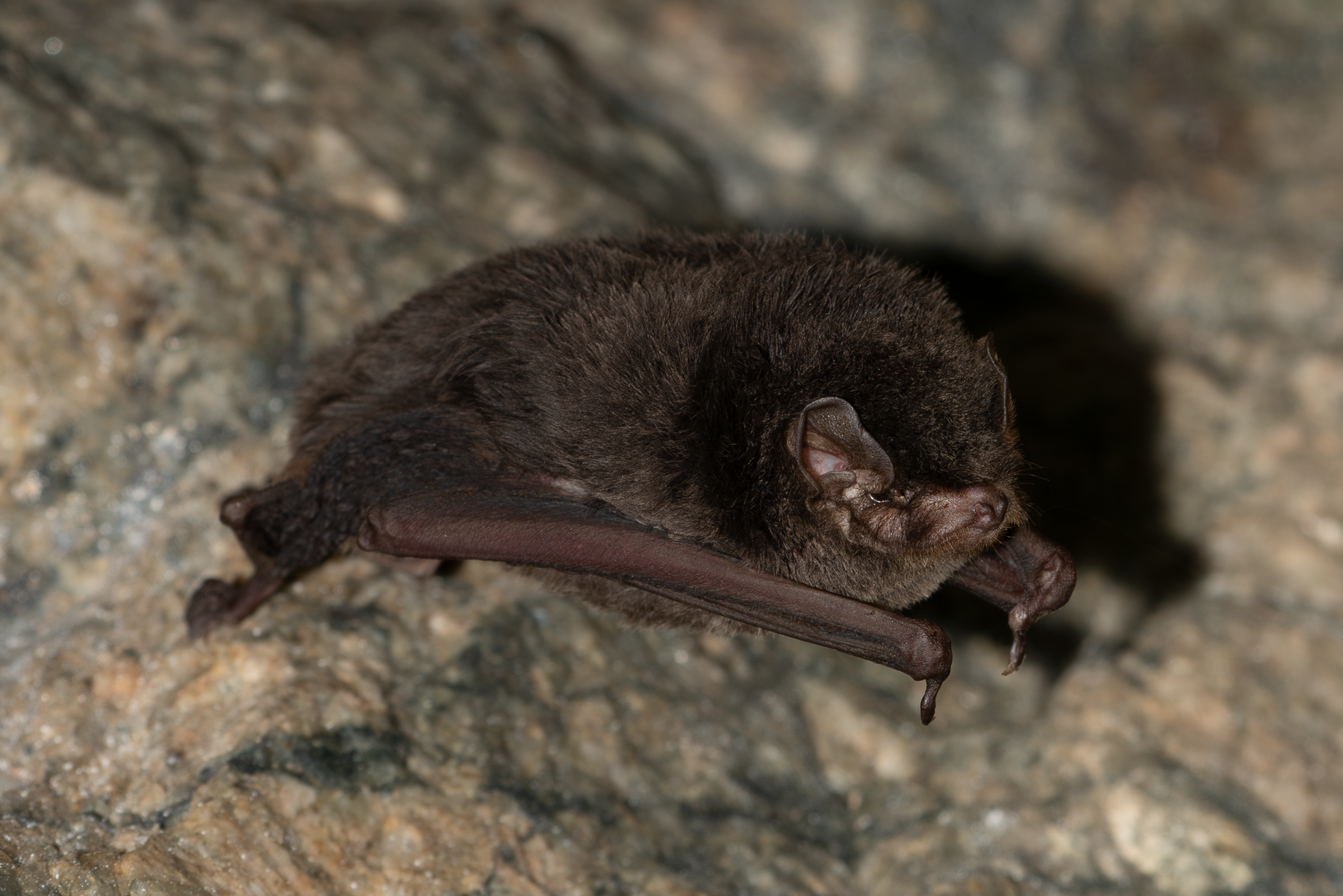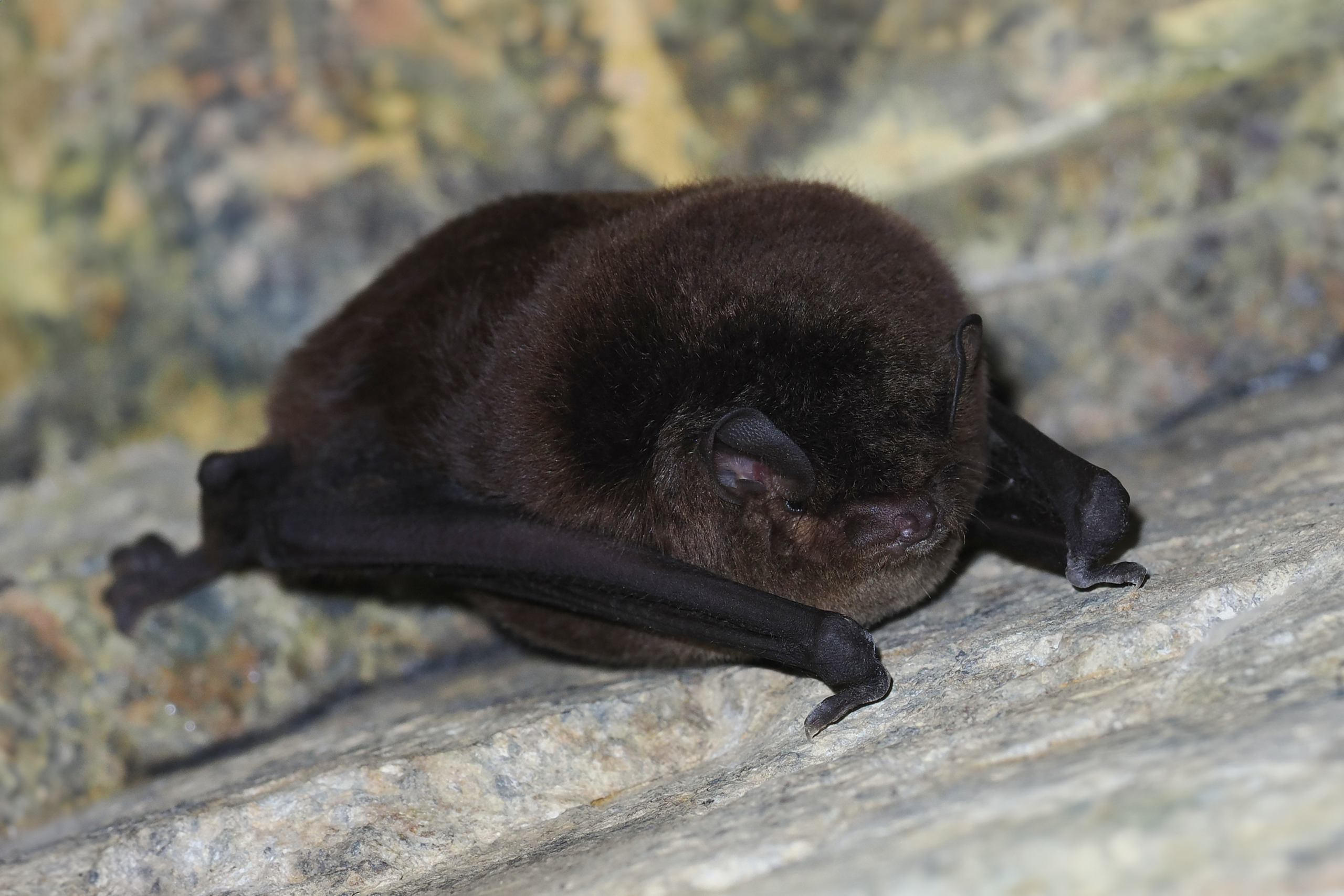- Hong Kong Bat Radar
- Lesser Bent-wing Bat (Miniopterus pusillus)
Lesser Bent-wing Bat
Miniopterus pusillus (Dobson, 1876)
Taxonomy
| Family: | Miniopteridae |
| Genus: | Miniopterus |
| Scientific name: | Miniopterus pusillus (Dobson, 1876) |
| Synonyms: | - |
| Common name: | Small Long-fingered Bat, Nicobar Long-fingered Bat, Small Bent-winged Bat, Nicobar Bent-winged Bat |
| Other name: | Large/Western Bent-winged Bat, Large/Western Long-fingered Bat |
| Remark: | M. pusillus was initially considered a subspecies of M. australis but was later elevated to a distinct species. It previously included a subspecies, M. macrocneme, which was subsequently also elevated to the status of a separate species. In 2023, a new species, M. srinii, closely resembling M. pusillus in external appearance, was discovered in the southern part of Karnataka, India. |
| Characteristics | |
| Color: | The body fur is long, silky, dense, and lustrous. The dorsal fur exhibits various shades, typically appearing as uniform dark gray or dark brown (black at the base and deep gray or brown at the tip), with most local populations exhibiting a deep gray coloration. Some individuals display fur color variations, with the head and upper body being brown and the lower body being dark gray, or partial fur whitening (such as the neck, back, and buttocks). The ventral fur is relatively lighter in color. Juvenile bats have a relatively darker overall fur color, appearing grayish-black. |
| Ear: | The ear pinna is short and round, with a rounded and non-protruding ear tip that does not extend beyond the pelage of the crown significantly. The tragus is thumb-shaped, with a short and blunt tip slightly curved forward. The color of the pinna and tragus variable, exhibiting considerable individual differences, ranging from a uniform deep gray to a gradation of deep gray above and pale white below, with the tragus occasionally being uniformly pale white. |
| Head: | The skull is highly elevated, and the snout is wide and short. |
| Limbs: | The wing membrane extends to the ankle. At rest, the wingtips fold outward, extending beyond the wingspan. |
| Tail: | The tail is long, completely enveloped by the interfemoral membrane. The calcar is long and unkeeled. |
| Body measurements | |
| Size: | Small Bent-winged bat |
| Body: | 38.4 - 50.2 mm |
| Tail: | 39.7 - 51.2 mm |
| Ears: | 9.2 - 10.9 mm |
| Hind foot: | 8.1 - 8.9 mm |
| Forearm: | 36.5 - 44.3 mm |
| Weight: | 9.0 - 11.0 g |
| Wing morphology | |
| Wing span: | 0.258 m |
| Wing area: | 0.008 m2 |
| Wing loading: | 7.37 N/m2 (Low) |
| Aspect ratio: | 8.23 (High) |
| Tip-shape index: | 1.523 (Mid) |
| Reference: | Jeyapraba et., 2023 |
Ecology
| Habitat: | Roosting primarily on rock walls, crevices, or drainage holes within water channels or abandoned mines, but also occupying crevices in buildings, rocks, and trees. |
| Habit: | Gregarious, but also solitary at times; colony sizes can reach over a thousand individuals, but local populations are relatively smaller, ranging from a single individual to over 500 (with a hibernating colony of over 500 individuals recorded in the Lin Ma Hang Mine). In colonies, individuals roost in close proximity or overlap. Generally, they only form clusters with conspecifics. During the winter, they are scattered in a solitary or small group pattern within the roosting site. |
| Reproduction: | Mating occurs from September to November, with breeding occurring from June to July and lactation period from July to August. Usually, only one offspring is produced. They form large breeding colonies with Myotis chinensis, Myotis pilosus, and Miniopterus pusillus, with Miniopterus spp. typically occupying the central positions within the colony. |
| Hibernation: | Hibernation typically occurs from late December to February, but the exact duration varies depending on weather conditions. |
| Flight: | With a lighter weight and slender body, M. pusillus has a lower wing loading compared to other bent-winged bats, resulting in a slower flight speed but maintaining excellent maneuverability and flight efficiency, as well as exceptional hovering abilities. The slower flight speed is advantageous for navigating and foraging in narrow and complex environments. |
| Foraging: | They typically leave their roosts after sunset and forage above the canopy in open areas, employing a moderate to slow flight speed, occasionally flying close to the ground, streams, or rivers. |
| Diet: | Insectivorous bat, capturing Coleopteran and Lepidopteran insects through aerial hawking. |
Distribution
| Local: | The New Territory, Hong Kong Island and Lantau Island |
| Global: | Patchy records in South Asia (Nepal and South India), much of mainland Southeast Asia (Myanmar, South China including Hainan Island, Thailand, Laos, Vietnam, and Cambodia), and part of insular Southeast Asia (Nicobar Islands, Sumatra, Java, Sulawesi, Lesser Sundas, and Moluccas); a record from Borneo requires confirmation. (Ibáñez & Juste, 2019) |
Local distribution map

Global distribution map
(Ibáñez & Juste, 2019)
Status and Conservation
| First record: | 1964 |
| Origin: | Native |
| Local status: | Uncommon (Shek & Chan, 2005) |
| National status: | Least Concern (Red List of China Vertebrates) |
| Global status: | Least Concern (IUCN Red List) |
| Potential threat: | TBC |
Echolocation
| Parameter | Value |
|---|---|
| Call structure | FM-QCF |
| Duration | 4.65 ± 3.17 ms |
| Inter pulse interval | 47.75 ± 16.03 ms |
| Peak frequency | 62.85 ± 3.56 kHz |
| Highest frequency | 109.73 ± 17.74 kHz |
| Lowest frequency | 52.28 ± 7.70 kHz |
|
Region: |
Thailand |
| Method: | Hand release / Flight tent |
| Reference: | Hughes et al., 2011 |
| Parameter | Value |
|---|---|
| Call structure | FM-QCF |
| Duration | 3.66 ± 1.33 ms |
| Bandwidth | 52.8 ± 11.2 kHz |
| Peak frequency | 64.13 ± 3.19 kHz |
| Start frequency | 110.92 ± 10.16 kHz |
| End frequency | 58.12 ± 1.98 kHz |
|
Region: |
India |
| Method: | Hand release |
| Reference: | Wordley et al., 2014 |
Similar Species
Asian Bent-winged Bat
Miniopterus fuliginosus
Size:
Medium size (overlapping with M. magnater )
Forearm:
44.7 - 49.6 mm
Color:
Varied from dark brown to dark gray.
Pinna:
Varied from uniform dark brown to dark gray; may exhibit a gradient from darker to lighter shades.
Tragus:
More pronounced curvature; generally evenly colored in dark brown or dark gray.
Echolocation:
Higher frequency than M. magnater.
Greater Bent-winged Bat
Miniopterus magnater
Size:
The largest size (overlapping with M. fuliginosus )
Forearm:
48.0 - 54.0 mm
Color:
Varied from dark brown to dark gray.
Pinna:
Varied from uniform dark brown to dark gray; may exhibit a gradient from darker to lighter shades.
Tragus:
More pronounced curvature; generally evenly colored in dark brown or dark gray; may exhibit a gradient from darker to lighter shades.
Echolocation:
Lower frequency than M. fuliginosus.
Lesser Bent-winged Bat
Miniopterus pusillus
Size:
The smallest size
Forearm:
36.5 - 44.3 mm
Color:
Varied from dark brown to dark gray.
Pinna:
Varied from uniform dark brown to dark gray; may exhibit a gradient from darker to lighter shades.
Tragus:
Relatively subtle curvature; generally evenly colored in dark brown or dark gray; may exhibit a gradient from darker to lighter shades and even appear uniformly pale white.
Echolocation:
Higher frequency than the others.
Bibliography
Borissenko, A. V., & Kruskop, S. V. (2003). Bats of Vietnam and adjacent territories. an identification manual. Geos, Moscow, Russia.
Furey, N. M., & Racey, P. A. (2016). Can wing morphology inform conservation priorities for Southeast Asian cave bats?. Biotropica, 48(4), 545-556.
Hughes, A. C., Satasook, C., Bates, P. J., Soisook, P., Sritongchuay, T., Jones, G., & Bumrungsri, S. (2011). Using echolocation calls to identify Thai bat species: Vespertilionidae, Emballonuridae, Nycteridae and Megadermatidae. Acta Chiropterologica, 13(2), 447-455.
Ibáñez, C., & Juste, J. (2019). Miniopteridae. In Mittermeier, R. A., & Wilson, D. E. (Eds.), Handbook of the Mammals of the World – Volume 9 Bats. (pp. 674-709). Lynx Edicions.
Jeyapraba, L., Margaret, I. V., Addline, D., & Sakthi, V. (2023). Prediction of foraging strategy of insectivorous bats through their wing morphology. Journal of Survey in Fisheries Sciences, 10(3S), 1,903-1,917.
Jiang, Z. G., Jiang, J. P., Wang, Y. Z., Zhang, E., Zhang, Y. Y., Li, L. L., Xie, F., Cai, B., Cao, L., Zheng, G. M., Dong, L., Zhang, Z. W., Ding, P., Luo, Z. H., Ding, C. Q., Ma, Z. J., Tang, S. H., Cao, W. X., Li, C. W., Hu, H. J., Ma, Y., Wu, Y., Wang, Y. X., Zhou, K. Y., Liu, S. Y., Chen, Y. Y., Li, J. T., Feng, Z. J., Wang, Y., Wang, B., Li, C., Song, X. L., Cai, L., Zang, C. X., Zeng, Y., Meng, Z. B., Fang, H. X., & Ping, X. G. (2016). Red List of China’s Vertebrates. Biodiversity Science 24(5), 500‑551.
Molur, S., Marimuthu, G., Srinivasulu, C., Mistry, S. Hutson, A. M., Bates, P. J. J., Walker, S., Padmapriya, K., & Binupriya, A. R. (2002). Status of South Asian Chiroptera: Conservation Assessment and Management Plan (C.A.M.P.) Workshop Report. Zoo Outreach Organization/CBSG-South Asia, Coimbatore, India.
Shek, C. T. (2006). A Field Guide to the Terrestrial Mammals of Hong Kong. Friends of country park and cosmos book limited.
Shek, C. T., & Chan, C. S. M. (2005). Roost Censuses of Cave Dwelling Bats of Hong Kong. Hong Kong Biodiversity, 10, 1-8.
Srinivasulu, B., & Srinivasulu, A. (2023). A new species of the Miniopterus australis species complex (Chiroptera: Miniopteridae) from the Western Ghats, India. Zootaxa, 5296(2), 233-249.
Thong, V. D., Denzinger, A., Sang, N. V., Huyen, N. T. T., Thanh, H. T., Loi, D. N., Nha, P. V., Viet, N. V., Tien, P. D., Tuanmu, M.-N., Huang, J. C.-C., Thongphachanh, L., Luong, N. T., & Schnitzler, H. U. (2021). Bat Diversity in Cat Ba Biosphere Reserve, Northeastern Vietnam, A Review with New Records from Mangrove Ecosystem. Diversity, 13(8), 376.
Wordley, C. F., Foui, E. K., Mudappa, D., Sankaran, M., & Altringham, J. D. (2014). Acoustic identification of bats in the southern Western Ghats, India. Acta Chiropterologica, 16(1), 213-222.
Hong Kong Bat Radar. (18/05/2025). A Field Guide to Bats of Hong Kong: Lesser Bent-wing Bat (Miniopterus pusillus ). https://hkbatradar.com/en/miniopterus_pusillus
